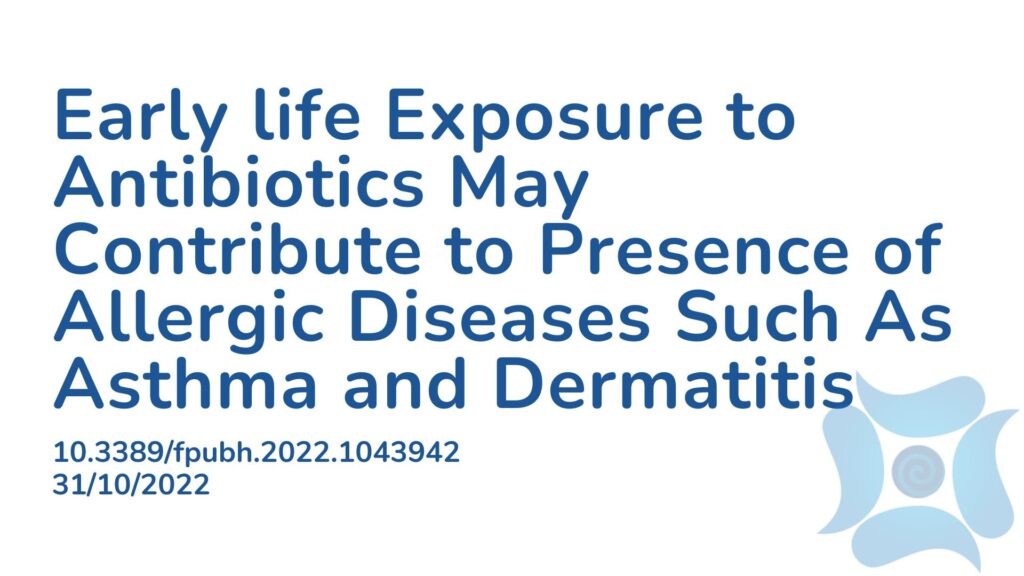Summary:
Allergic conditions such as asthma and dermatitis are extremely common and are increasing in prevalence. The purpose of this paper was to examine whether early life antibiotic exposure may contribute to allergic conditions. 251 mothers and infants were included in this five year follow up study and were assessed for antibiotic use during pregnancy. The researchers then determined the presence of allergies at the age of five with various tests such as skin-prick-tests. The results showed that the incidence of allergic diseases such as asthma, wheeze and dermatitis was higher in the group that were exposed to the highest amount of antibiotics. In conclusion, early life antibiotic exposure may be correlated with an increased risk of allergic diseases for five year olds.
Abstract:
Background: Globally, the prevalence of allergic diseases remains high, as does the level of environmental antibiotics. It has been found that clinical antibiotic application may increase preschool allergy risk. However, few biomonitoring studies have been conducted about the association between early life environmental trace dose antibiotic exposure and preschool allergy. Objective: To analyze the association between prenatal environmental antibiotic levels and allergic diseases using logistic regression models. Methods: A total of 743 pregnant women and their offspring from the Shanghai Allergy Birth Cohort completed five years follow-up, and 251 mother-infant pairs were finally included. Maternal urine samples were collected for 15 antibiotic quantitative measurements using liquid chromatography-tandem mass spectrometry. The high-antibiotic group was defined as having at least half of antibiotics exceeding the median concentration. Allergic diseases were assessed by clinicians through clinical history, standardized questionnaires, and annual physical examinations until the age of five. Skin-prick-test (SPT) was performed at 5 years old. Results: The incidence of allergic diseases was generally higher in the high-antibiotic than that in the low-antibiotic group. Compared to the low-comprehensive antibiotic group, children in the high-antibiotic group were weakly associated with allergic diseases but had a 6-fold increased risk of food allergens sensitivity (OR: 7.09, 95% CI: 1.59, 31.74). Association of above-median single prenatal antibiotic concentration exposure and allergic diseases was also observed (azithromycin and asthma, OR: 2.72, 95% CI: 1.15, 6.42; enrofloxacin and wheeze, OR: 2.22, 95% CI: 1.22, 4.05; trimethoprim and atopic dermatitis, OR: 2.00, 95% CI: 1.08, 3.71). Moreover, children with higher prenatal norfloxacin levels were more sensitive to food allergens (OR: 5.52, 95%CI: 1.54, 19.71). Conclusion: Early-life environmental antibiotic exposure may be correlated with an increased risk of asthma, wheeze, atopic dermatitis, and SPT positivity for food allergens in 5-year-old children.
Article Publication Date: 31/10/2022
DOI: 10.3389/fpubh.2022.1043942



